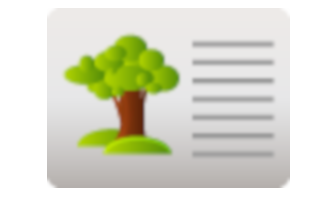Graphs
Mathematics, Grade 6
Graphs
Study Guide

Graphs
Flash Cards

Graphs
Quiz

Graphs
Worksheets

Graphs
Games

Study Guide Graphs Mathematics, Grade 6
❮
1
/
4
❯
READ AND INTERPRET GRAPHS • A graph is a diagram that shows information in an organized way. • Each axis is labeled to identify the data being presented. • There are several types of graphs: bar graphs, line graphs, picture graphs, and circle graphs. All serve the same purpose: to organize data. • Graphs show relationships between two numbers and also compare two or more sets of data • In the bar graph, the number of fish caught in 2006 is compared with the number of fish caught in 2007. This graph also illustrates a comparison between the kinds of fish that were caught. • The labels on the graph help us read and interpret the graph. We read the facts shown and we also make inferences and draw conclusions as we interpret the meaning of the data presented on the graph. © Copyright NewPath Learning. All Rights Reserved. Permission is granted for the purchaser to print copies for non-commercial educational purposes only. Visit us at www.NewPathLearning.com.
How to read and interpret graphs: • Begin by reading the labels in order to understand what data is being presented. • Use the horizontal axis and the vertical axis to “read” the graph. In the graph #1 above, 60 trout were caught in 2006, 75 perch were caught in 2007, 30 salmon were caught in 2007, and 10 bass were caught in 2007. • By reviewing the graph, you can also interpret the data. This includes making inferences and drawing conclusions. For instance, a conclusion might be more walleye were caught in 2007 than in 2006. An inference might be there were more walleye to catch in 2007. • In the picture graph, the number of fruit needed to make a pie is graphed using a “fruit shape.” Each picture of the fruit is equal to 2. From reading the graph, you can conclude 14 peaches are needed to make a pie. You can infer that cherries must be smaller than apples since it takes so many more of them to make a pie. © Copyright NewPath Learning. All Rights Reserved. Permission is granted for the purchaser to print copies for non-commercial educational purposes only. Visit us at www.NewPathLearning.com.
• In the line graph, the cost of a new bike is compared over 50 years. Line graphs often show trends. In this case, you can conclude that the cost of a new bike has been going up over this time period. You can read the cost of a bike in 1980 was about $75. • Reading a graph means stating facts, obvious information another reader could also see. In the bar graph, you can read the number of salmon caught in 2006 was 15. • From the data outlined in the bar graph, you can infer more people catch perch and trout in Silver Lake. • From the picture graph, you can read 8 apples are needed to make an apple pie. You can conclude it takes more peaches than apples and so infer peaches are smaller than apples. • In line graph, you can read the cost of a bike in 1950 was $50 and infer other things may have cost less at that time. • Graphs offer an organized, visual display of the relationships between different sets of values. The labels on the graph help us read and interpret what is presented. © Copyright NewPath Learning. All Rights Reserved. Permission is granted for the purchaser to print copies for non-commercial educational purposes only. Visit us at www.NewPathLearning.com.
Try This! Look at the bar graph above: Which fish was caught most often in Silver Lake in 2006? _________________________________________________ If you wanted to catch salmon would you go to Silver Lake? _________________________________________________ Look at the picture graph above: How many cherries are needed to make a pie? _________________________________________________ Why are there more symbols above the word cherries? _________________________________________________ Look at the line graph above: When did a bike cost $100? _________________________________________________ Why might the price of a bike have decreased in 1980? _________________________________________________ © Copyright NewPath Learning. All Rights Reserved. Permission is granted for the purchaser to print copies for non-commercial educational purposes only. Visit us at www.NewPathLearning.com.
